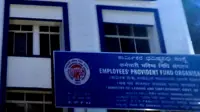Chennai''s neighbourhood news war
By business and many are tu | 27 Jan 2005
Chennai's independent, local newspapers, distributed free, have established their own dynamics. Many are changing their colour from plain black.![]() Chennai: In a silent move, two city-based newspaper companies, Kasturi & Sons Ltd (publishers of The Hindu) and News Today Printers & Publishers (P) Ltd (publishing News Today evening daily) have entered the Chennai neighbourhood newspaper market.
Chennai: In a silent move, two city-based newspaper companies, Kasturi & Sons Ltd (publishers of The Hindu) and News Today Printers & Publishers (P) Ltd (publishing News Today evening daily) have entered the Chennai neighbourhood newspaper market.
While News Today brings out four publications — Mylapore Talk (30,000 copies), T Nagar Talk (40,000 copies), Anna Nagar Talk (50,000 copies) and Adyar Talk (40,000 copies) — covering the respective localities, Kasturi & Sons brings its version as Downtown, a tabloid supplement that comes with The Hindu on Sundays.
Though the officials of the two companies are unwilling to talk about their recent move, the logic, obviously, is to tap the business potential now being exploited by several others.
For Kasturi & Sons, the move into neighbourhood segments could be a strategic one in the wake of ensuing competition from dailies like the Deccan Chronicle and Times of India.
As a local supplement that comes along with The Hindu, which boasts a 2.5-lakh circulation in Chennai, the paper can now offer more local news and features as its unique selling proposition that the new entrants cannot match, at least initially. Interestingly, the daily has another city supplement called Metro Plus.
While News Today has already appointed dedicated reporters for each of its publications, Kasturi & Sons, it is learnt, will be doing so soon.
Unlike the mainline English newspaper scene in Chennai where there are only two — The Hindu and The New Indian Express — there are more than 30 neighbourhood papers. Some like Adyar Times and Mylapore Times are a decade old and some like Apollo Times and Suburban Voice are relatively younger.
![]() Though free newspapers or mailers are not new to Chennai their growth started in the early '90s when the liberalised economy brought in new industries and service providers. With the mainline dailies restricted essentially to national and international news and their high ad tariff rates keeping out local business establishments from advertising, free neighbourhood publications came to fill the void.
Though free newspapers or mailers are not new to Chennai their growth started in the early '90s when the liberalised economy brought in new industries and service providers. With the mainline dailies restricted essentially to national and international news and their high ad tariff rates keeping out local business establishments from advertising, free neighbourhood publications came to fill the void.
Almost all of them started as four-page free publications reaching around 5,000 homes in an up market locality. With the advertisers and the readers finding them useful, the revenues started flowing, resulting in increased pages and print runs.
Today, even multinationals and large Indian corporates find these publications an attractive media to reach their target audience. One can even find recruitment advertisements from call centres and other corporates in the local tabloids.
As R Krishna Mohan, president, Ogilvy & Mather, says, "We are looking at this segment positively as it offers distinct opportunities for our clients."
Small is big
According to N Ravi, editor and publisher, Suburban Voice, "Gone are the days of people looking for neighbourhood publications to find a music teacher or gas stove service mechanic. Now, almost all large ad agencies approach us for specific needs and area-based reach." Launched in 1999, Suburban Voice covers 40,000 households in south Chennai suburbs every week.
"On an average, our publication deals with about 70 advertisers, both large and small, every week. Of the 70, there are at least 30 advertisers who have long-term relations or contracts with us," says Ravi.
There are organisations that swear by neighbourhood papers and do not advertise in mainline dailies. Apart from the display ads, the papers have a big cash-down classified section, eating into the revenues of the mainline dailies. According to Mohan, the Chennai print ad market is estimated at Rs500 crore. However, nobody is able to put a number to the ad market for the neighbourhood papers.
The operational economics seems to be simple but lucrative. The per copy cost of a 12-page tabloid works out to Rs1.20 in the case of black and white and Rs2.50 if produced in colour. And the profit margin according to one industry source is nearly 40-50 per cent per issue.
Areas with several middle, upper middle, rich class apartments, houses and commercial establishments are ideal areas for starting a publication. The two requisites for successful neighbourhood publications are: (a) reaching the newspaper to target households normally during the in the morning during the weekend and (b) a decent local content creator. If these two are tied up then advertisers automatically come, says an insider.
For their content, many publications depend on freelancers. Some like the Adyar Times, Mylapore Times, Arcot Road Times and Apollo Times have full time reporters and photographers.
Though the field is fiercely competitive, in some areas there are over five publications — everybody seems to be doing good business attracting new players.
And the majors are not bothered by the entry of big publishing groups like Kasturi & Sons and News Today Printers & Publishers despite their editorial and marketing strengths. Already senior journalists belonging to the two houses have started writing for their local tabloids.
Says the 45-year old Vincent D'Souza, editor and publisher of three publications — Adyar Times, Arcot Road Times and Mylapore Times, "Of what we have seen of the 'competitors', they are out of sync with the neighbourhoods. Everybody can make coffee, but only a few can make real coffee! Ours are the real papers. Downtown is an advert-paper." His three papers have a circulation reach of between 25,000 and 40,000, houses.
Adds Ravi, "I don't foresee a major daily group taking over our share in the market as we operate on a totally different platform carved out with reach and area specific information."
According to him, the single advantage the smaller standalone papers have over the large media houses is the flexibility in modifying their ad rates or tailoring special packages. The individual papers can be more aggressive in offering attractive customised packages that the larger ones often find cumbersome to design for individual advertisers.
In addition, publications like Mylapore Times, Adyar Times and Apollo Times have bonded well with their communities by conducting local contests and events exclusively for their readers.
Pricing will be suicidal
Though the neighbourhood papers have built impressive circulation and good readership many agree that pricing their publication could be suicidal. The main reason for the success of neighbourhood newspapers is that it is dropped at the doorstep free. And the dynamics of a priced publication is entirely different.
As a matter of fact, one of the reasons the existing players are not perturbed by Downtown is that it comes with The Hindu priced at Rs4.50.
A cursory look at the neighbourhood papers seems to establish that news is what is published between advertisements. Some even term them as compendium of bit notices.
Most of the small publishers agree that priority is given to advertisements. According to Ravi, for the community newspaper readers, every advertisement is news by itself. "There are so many other media to deal with news. Neighbourhood magazines are purely an information resource and I strongly feel that we do perfectly what is expected of us."
But D' Souza strongly disagrees. "There cannot be news between ads! For the record, the Adyar Times, which has between 20 and 24 pages every week, carries no less than 40 news pieces and about 20 pictures."
As the publications are ad-driven, there are those who agree privately that editorial compromises have to be made in reporting and most of them confine themselves to harmless reporting.
However, the major problem they face is convincing new advertisers about their reach as there is no third party to certify the circulation.
Some ad agencies discount the reach of such papers by sizeable numbers. "One has to look at it practically. In the case of apartments, the delivery boys do not actually count and give copies to the watchman. They deliver a bunch and in many cases the number is lower than the actual number of apartments in that complex. The average readership is taken as two," reasons M Rajaram, director, Trinity Communications, an ad agency.
However, such discounting could not be done in the case of The Hindu as it reaches its subscribers doorsteps without fail.
According to him, content and the reach are what he looks at in a local tabloid while suggesting a publication to his clients. "As a test case I would advise my client to advertise in a couple of magazines in a locality. Based on the response, we finalise one paper and stick to that."
Would he consider neighbourhood publications as the sole medium for his clients? "These publications are only a supportive brand reinforcing medium and cannot substitute a mainline daily."
Though Ogilvy & Mather's Mohan terms Chennai's print ad market relatively small, the neighbourhood publications are doing good business and many are turning to colour. And with the entry the big boys, one has to wait and see how this segment pans out.



































